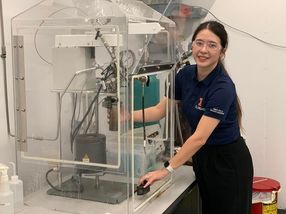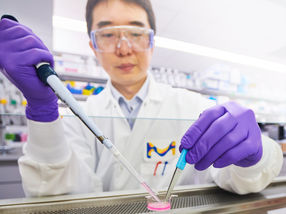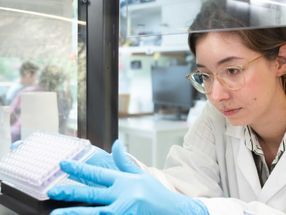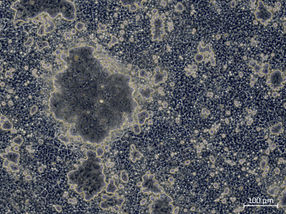NSF-funded Rice study will trace path of nanomaterials
Researchers want to know if particles can be transported through food chain
Advertisement
Working to ensure the safe use of nanomaterials is the basis of a new rice study funded by the National Science Foundation. Led by Pedro Alvarez, the George R. Brown Professor and chair of the Civil and Environmental Engineering Department, and Vicki Colvin, the Pitzer-Schlumberger Professor of chemistry and director of the Center for Biological and Environmental nanotechnology, the study will trace tagged nanoparticles to increase understanding of how they move through the environment and what impact they may have on the health and function of natural systems. With industrial-scale production of materials that use nanoparticles on the near horizon, Alvarez said now is the time to address concerns over their safety. "Nanotechnology offers tremendous potential to enhance our quality of life, from improving the performance of commercial products, to enhanced diagnosis and treatment of disease, to refining water and cleaning up the environment," he said. Nanotechnology, said Alvarez, "is full of initially promising qualities, but you have to consider the potential for environmental damage. For example, look at DDT. Hans Mueller won the Nobel Prize in 1948 for using DDT to fight malaria, but now we know the environmental damage impact." He said the study will take a proactive approach to the potential dangers of nanoparticles, a subject that has found its way into the popular press in recent years. "When you have an increase in the production of nanomaterials, I can assure you some will enter the environment through waste or the manufacturing process. We're focusing on fullerenes, and this grant is aimed at trying to understand their impact." "One aspect is to look at what nanomaterials do to, or in, the environment," he said. But Alvarez and Colvin are turning the tables to see what the environment does to nanomaterials. "When you alter the structure of fullerenes, via bacterial means or fungi or enzymes, you may also affect their toxicity or reactivity." John Fortner, a Rice research scientist whose thesis was on fullerene behavior in water, said fullerenes made with 14C, a mildly radioactive carbon isotope, were manufactured for the study. The tagged fullerenes can be tracked easily as they are altered by microbes, specifically fungi, and even monitored if they are completely broken down into carbon dioxide molecules. "Fungi are amazing in their tolerance and what they can degrade," said Fortner. "It is amazing what fungi can break down biochemically, from pollutants to wood, even things like tires and nylon." It's how fungi change the structure of the fullerene molecules, if at all, that's of interest, and how that material is released back into the environment. "In what form will they reach an organism, and will that form be detrimental? That's a tough question to answer," he said. The good news, said Alvarez, is that "we'll be able to know for sure where they end up. We also plan to study whether this nanomaterial bioaccumulates and whether it can be transported through the food chain. "There are many critical gaps in determining how dangerous nanomaterial is," he said. "So our strategy is to inform safety by design, safe disposal, and safe manufacturing and handling."
Most read news
Topics
Organizations
Other news from the department science

Get the chemical industry in your inbox
By submitting this form you agree that LUMITOS AG will send you the newsletter(s) selected above by email. Your data will not be passed on to third parties. Your data will be stored and processed in accordance with our data protection regulations. LUMITOS may contact you by email for the purpose of advertising or market and opinion surveys. You can revoke your consent at any time without giving reasons to LUMITOS AG, Ernst-Augustin-Str. 2, 12489 Berlin, Germany or by e-mail at revoke@lumitos.com with effect for the future. In addition, each email contains a link to unsubscribe from the corresponding newsletter.































































